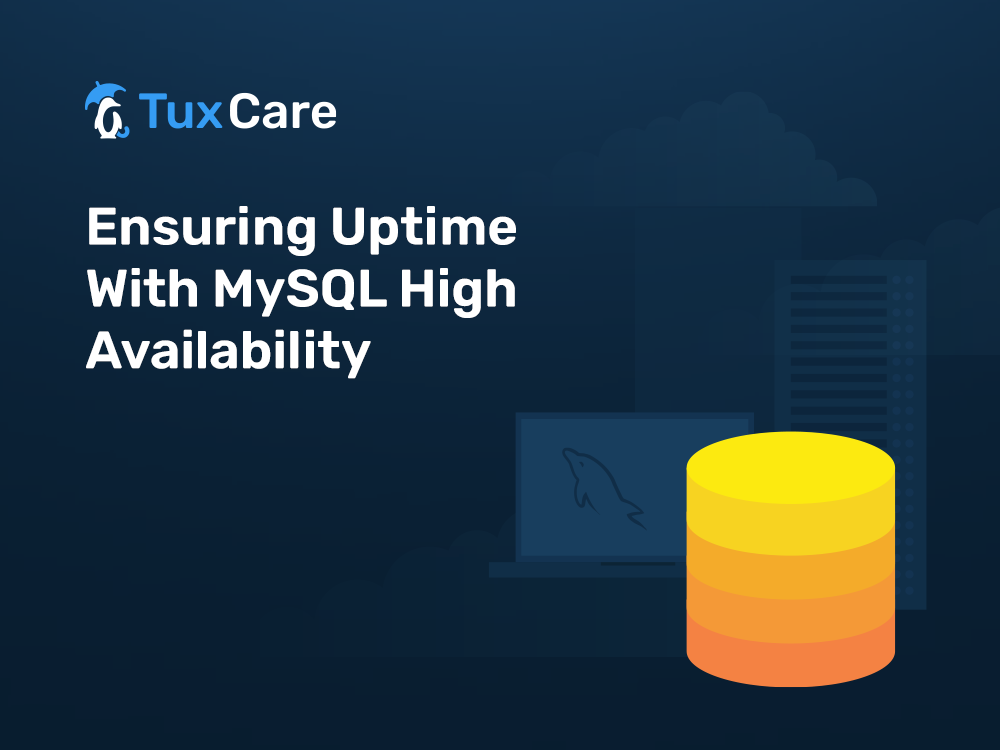Ensuring Uptime with MySQL High Availability
MySQL high availability allows companies to run databases that meet higher uptime requirements and zero data loss tolerance, which are highly sought-after goals that every organization should want to achieve.
In this blog post, we’ll explore what high availability means for databases, how organizations can maintain high availability with MySQL, and what else companies can do to avoid downtime in other areas of their organization.
First Thing’s First: What is MySQL?
Storing data is one thing, but the ability to retrieve the stored data is another important part of data storage. Since there is the need for a systematic way of getting specific data, users need Structured Query Language (SQL) to facilitate the process through a strategy called “querying.”
MySQL is a relational database management system (RDBMS) based on SQL, which is used to create, maintain and retrieve relational databases.
SQL and relational databases were designed to solve the bulkiness and problems that simple data entry systems cannot solve. This is because once users start expanding their business, a basic database will become bulky, unmanageable, and redundant. Problems including repeat orders, repeated data entries which cause unnecessary redundancy and take up space will manifest.
Some of the benefits of using MySQL include the fact that it is easy to use and users don’t need to be technical experts to access the database. MySQL is also free to use and it offers users the ability to customize the source code as their application. While MySQL is secured, it offers better performance by supporting the multi-engine storage feature.
What Is High Availability?
Before we get into the MySQL high availability, let’s identify what high availability means in general terms.
Availability simply means the uptime and reliability of the service or system a company is using and it is often measured in terms of percentage. High availability refers to a system’s ability to function continuously without failure for an extended period of time.
High availability IT systems and services are designed to be available 99.999% of the time during both planned and unplanned outages. Often referred to as “five-nines” reliability, the system is essentially always on.
High availability implies minimal downtime and service interruptions, enabling companies to maintain robust production systems.
What Are the Typical Features of a High Availability System?
Some of the notable features of high availability include:
- Infrastructure and data redundancy is an integral part of high availability and it means that IT components, like servers or databases, can perform the same tasks. It includes hardware redundancy, software and application redundancy, and data redundancy. Infrastructures hosted with redundancy can serve as a backup server that will take over in situations of failure.
- High availability is impossible without replication of data because data needs to be replicated and shared with the same nodes in a cluster. It is essential that the nodes maintain regular communication and share the same information. This is important as it will ensure that any of the nodes can step in to provide optimal service when the server or network device supported fails.
- A failover is essential, as it can allow IT administrators to quickly move to a failover system when primary systems fail or are overloaded.
- A failure detection and correction mechanism is vital, as prompt detection of errors can allow the framework to either perform corrective steps on the primary system. Once errors are promptly detected, the framework could failover the services to a standby system.
- A user/application redirection mechanism, which kicks in once the standby systems take over as the primary infrastructure, then the high availability feature ensures that all application and user connections are transferred or redirected to the new primary database.
Why Should You Care About MySQL High Availability?
MySQL high availability is essential for organizations looking to guarantee zero or minimal downtime for databases.
A MySQL high availability framework include a three-node master-slave configuration that can be used to implement a MySQL semi-synchronous replication process while guaranteeing infrastructure and data redundancy.
Top functionality of the MySQL high availability framework includes
- Corosync
- Pacemaker
- Resource Agent
- DNS Mapping Component
Corosync as a component of MySQL high availability provides a transparent communication infrastructure for the database servers or nodes. This enables them to exchange messages reliably.
Pacemaker, also known as Cluster Resource Manager (CRM), is an important component that guarantees high availability for MySQL databases running on the cluster.
Resource agent serves as an interface between MySQL master-slave databases and the pacemaker. It can be used to implement start, stop, promote, demote, and monitor actions initiated by the pacemaker.
The DNS mapping component changes the master MySQL server’s DNS records with the IP address of the new master after a successful failover.
To achieve MySQL high availability, the MySQL database uses the MySQL and InnoDB cluster, which provides an integrated and native HA solution for databases while providing single and multi-master failover detection capabilities.
The MySQL InnoDB cluster has three main components, including MySQL servers with group replication capabilities, MySQL Router, and MySQL Shell.
How You Can Achieve High Availability with Live Patching
Ensuring MySQL high availability is vital because it can help organizations minimize downtime and service interruptions while companies operate robust production systems, helping teams accelerate their production timelines.
High availability is an architecture choice when designing a system that adds resilience when facing unplanned events, like hardware failures, unexpected power loss, or similar. Relying on high availability to cover maintenance operations reduces the overall resilience of the solution, as less nodes are maintaining the service during patching. Additionally, this impacts performance – less nodes running at any given time translates to less capacity overall.
Live patching can address the need for patching while maintaining operational resilience and performance by eliminating the need to take individual nodes out of operation – helping companies maintain high availability.
TuxCare’s automated live patching solutions enable companies to deploy the latest Linux vulnerability patches without needing to reboot systems or schedule downtime. With TuxCare, patches are automatically applied as soon as they become available, enabling teams to minimize their manual patching workflows.



 Documentation
Documentation Login
Login



